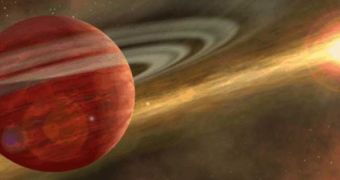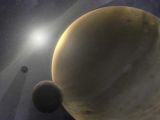Scientists have tried for a long time to figure out how the elements necessary for life might appear on other planets. One of the preferred ways to do this was with the help of a computer model, which simulated the interactions that appeared between a number of chemical elements, and determined the probability of these chemicals combining themselves in such a way that would allow for life to at least have a chance of developing. In a groundbreaking, new study, experts at NASA assess the influence that the chemistry of developing planets has on the matter, Space reports.
“If we're looking for Earth-like planets, it'd be nice to know the chemistry we're after,” University of Arizona in Tucson (UAT) planetary scientist Jade Bond says. The expert is also the lead author of a new study detailing the computer simulations, which was published in the August/September issue of the respected scientific journal Icarus. One of the motivations behind this line of research is the fact that further knowledge on what makes a planet tick with life could help make surveys by instruments such as NASA's Kepler Space Telescope more likely to actually yield positive results.
The new models Bond and her team created showed that rocky, Earth-sized planets formed from gas and dust swirling frantically in early, protoplanetary systems. Just after a new star is formed, the debris belt it has around it, made up of materials that didn't quite make it in the star, begins to swirl around the flaming giant. After years, larger bodies begin to clump together out of dust particles, and protoplanets are thus born.
In a first step-type study, the Bond team only looked at the chemistry of celestial bodies in our solar system. Ultimately, the goal of its research is to create an extensive data bank that will allow it to infer the properties of rocky exoplanets around other stars as well. Speaking about the supercomputers her team would need to complete its studies, Bond says, “To essentially get every aspect of this, get all the dynamics going, track every single particle and every outflow from every collision, adding in chemistry, crossing the ice lines, the computational power is just ridiculous for that.”
“Basically we're trying to get a better sense of how terrestrial planets form, and the processes that we can expect to see. And we're not only focused on our solar system, but other planetary systems as well,” Bond adds.

 14 DAY TRIAL //
14 DAY TRIAL // 
